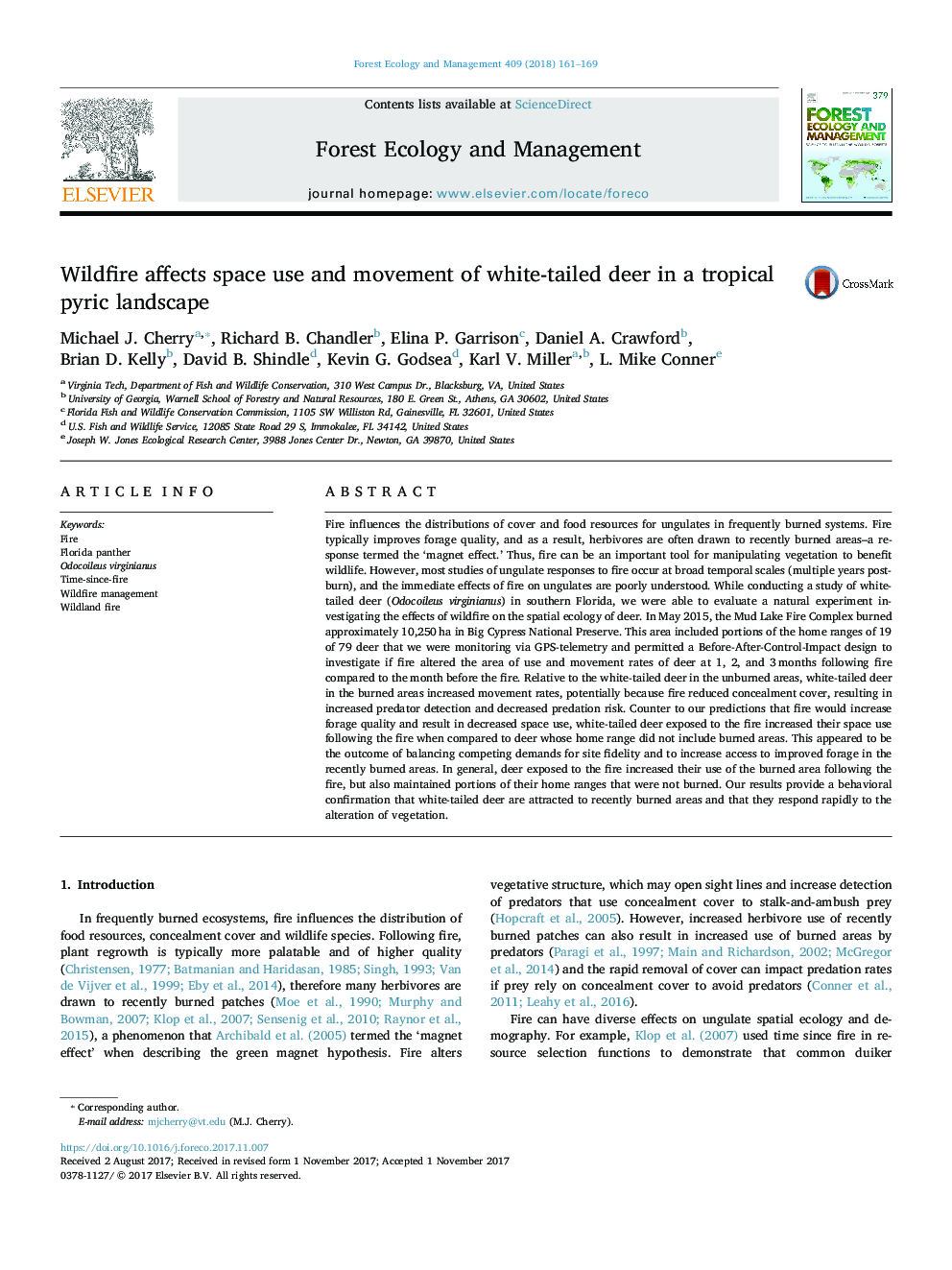| Article ID | Journal | Published Year | Pages | File Type |
|---|---|---|---|---|
| 6541879 | Forest Ecology and Management | 2018 | 9 Pages |
Abstract
Fire influences the distributions of cover and food resources for ungulates in frequently burned systems. Fire typically improves forage quality, and as a result, herbivores are often drawn to recently burned areas-a response termed the 'magnet effect.' Thus, fire can be an important tool for manipulating vegetation to benefit wildlife. However, most studies of ungulate responses to fire occur at broad temporal scales (multiple years post-burn), and the immediate effects of fire on ungulates are poorly understood. While conducting a study of white-tailed deer (Odocoileus virginianus) in southern Florida, we were able to evaluate a natural experiment investigating the effects of wildfire on the spatial ecology of deer. In May 2015, the Mud Lake Fire Complex burned approximately 10,250â¯ha in Big Cypress National Preserve. This area included portions of the home ranges of 19 of 79 deer that we were monitoring via GPS-telemetry and permitted a Before-After-Control-Impact design to investigate if fire altered the area of use and movement rates of deer at 1, 2, and 3â¯months following fire compared to the month before the fire. Relative to the white-tailed deer in the unburned areas, white-tailed deer in the burned areas increased movement rates, potentially because fire reduced concealment cover, resulting in increased predator detection and decreased predation risk. Counter to our predictions that fire would increase forage quality and result in decreased space use, white-tailed deer exposed to the fire increased their space use following the fire when compared to deer whose home range did not include burned areas. This appeared to be the outcome of balancing competing demands for site fidelity and to increase access to improved forage in the recently burned areas. In general, deer exposed to the fire increased their use of the burned area following the fire, but also maintained portions of their home ranges that were not burned. Our results provide a behavioral confirmation that white-tailed deer are attracted to recently burned areas and that they respond rapidly to the alteration of vegetation.
Related Topics
Life Sciences
Agricultural and Biological Sciences
Ecology, Evolution, Behavior and Systematics
Authors
Michael J. Cherry, Richard B. Chandler, Elina P. Garrison, Daniel A. Crawford, Brian D. Kelly, David B. Shindle, Kevin G. Godsea, Karl V. Miller, L. Mike Conner,
